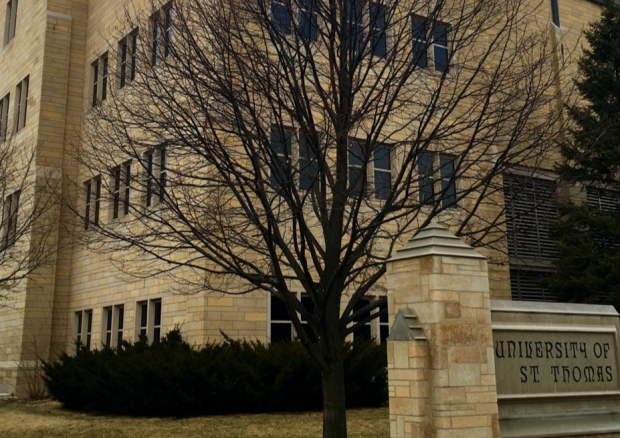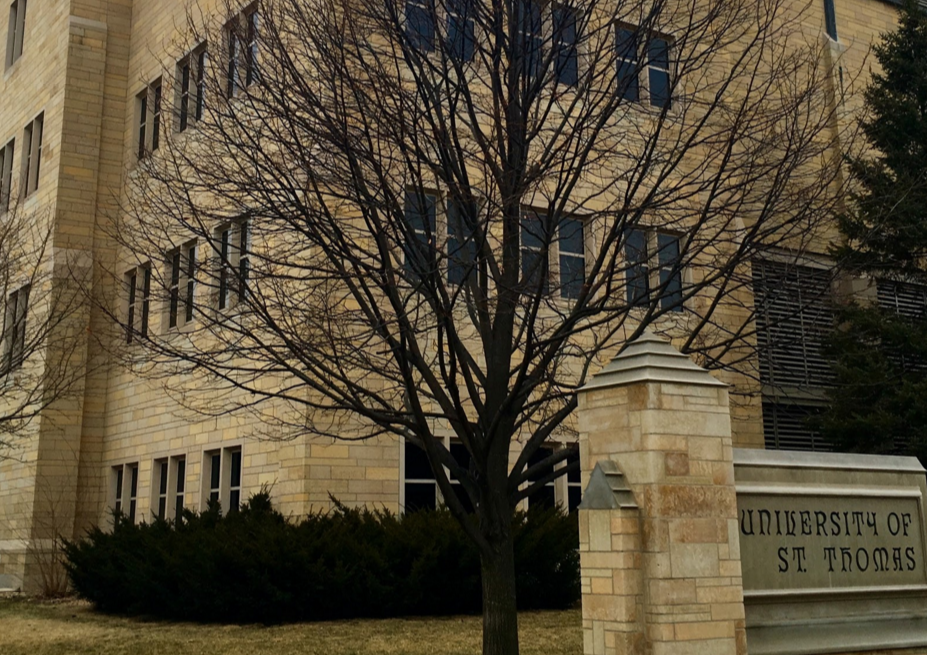
The St. Thomas Sustainability Committee was discontinued during the last school year, and the environment surrounding campus is taking the fall, according to environmental science Professor Adam Kay.
But Vice President for Business Affairs and Chief Financial Officer Mark Vangsgard said the $50,000 fund has not been shut down permanently.
“It hasn’t been disbanded per se, but we are taking a pause to re-structure it in a more meaningful way,” Vangsgard said.
The $50,000 committee fund was designed for student use, but according to Vangsgard later became one to which faculty could apply to get money for individual research projects and activities not funded through their normal budgets.
“(The $50,000) didn’t have the same level of student impact in the last few years that it’s had in the previous years,” he said.
Vangsgard hopes to restructure the committee so that diverse voices — including those from student affairs, academics and university relations — contribute to the discussion.
“We will have this kind of Camelot — a round table with people who are representing their function at the table and have responsibilities for sustainability activities in their function,” Vangsgard said.
However, the previous committee already had many influential and diverse voices according to Kay, who was a member of the committee for about a year.
“It was made up of an interdisciplinary group of people with a mix of faculty and staff. People from really diverse entities on campus working together to try to highlight sustainability initiatives,” Kay said.
St. Thomas junior Cari Monroe was one of those voices on the committee. Monroe was responsible for bringing the student perspective on sustainability to the table.
“A high priority was given to the applications that students were involved in, and I think that was really cool,” Monroe said. “I helped write a grant for one of my classes to get the solar panels on the roof of the student center.”
Kay was involved in several committee construction projects, such as an upgrade for the stewardship garden.
“The sustainability fund helped us to launch a projected called Growing Science,” Kay said. Brightside Produce, a student-run produce distribution program, also started with a grant from the fund.
The restructuring of the committee is under way, but Vangsgard said there are many priorities that must also be attended to.
“Is it above or below mission? Is it above or below academic experience? Is it above or below athletics? That always gets to be slippery because I am not sure if we have a priority for any of those,” Vangsgard said. “(Sustainability is) certainly a focus area.”
Kay strongly believes sustainability should be a top priority on campus because it is a critical issue that will continue to be a problem.
“Not only is it the right thing to do in terms of community development, but it’s something we need to expose all of our students and the general public to. We could be leaders of this issue but we have to invest in it,” Kay said. “We need to have everyone engaged in this issue because this issue as a global problem is not going away.”
Monroe also thinks sustainability on campus should be one of the top priorities.
“I just think it’s really important, especially with our carbon-neutral goal, that we should really be focusing on it more in order to actually achieve that goal. It’s really cool that it’s in place and I think some of the ideas are there to accomplish it,” Monroe said. “But I think execution-wise we could use a little work.”
Vangsgard noted that St. Thomas does have solar panels on top of the Anderson Student Center and Brady Hall, but that being a city campus it is hard to implement the large sustainability structures that rural campuses have.
“(There) you have this land to do things for sustainability that we just can’t do in a city environment,” Vangsgard said. “It does create a perception for people that city schools are not sustainable because of the lack of those visual things.”
Kay said that there are many opportunities on city campuses to be sustainable.
“There are a lot of options for public transportation, there’s a lot of interest among city members in creating sustainable environments,” Kay said. “The landscaping practices in Minneapolis are changing rapidly toward chemical free approaches. There’s just a lot of enthusiasm for the issue and I think that we could build upon that. It can be done anywhere.”
Monroe thinks communication is a key factor in continuing sustainability at St. Thomas.
“I only know of these things because I am directly involved with them,” Monroe said. “But I know that there are so many people who don’t even know that we have solar panels on our roof now, and … you can’t get pressure from the student body to become more sustainable because they don’t even know what’s going on.”
Marissa Groechel can be reached at groe5630@stthomas.edu.




This is really sad. How can we not think it is important enough to keep it going?
To have Vangsgard state that the money “didn’t have the same level of student impact in the last few years” is, I feel, a true distortion from my experience at the University of St. Thomas. As a former student who was highly involved in both the Stewardship Garden’s Growing Science program and BrightSide, these are both projects that involve dozens of students. It was my perception that they involved a relatively large amount of students for the school.
To have a faculty mentors working on these sustainability grants is integral to the success of the programs. The professors are able to mentor students, teach students how to write our own grants, award course credit for undergraduate student research, and provide their much appreciated expertise for advancing the projects.
I would like to include that I had an internship interview this morning; employers were impressed with my involvement in the Stewardship Garden and BrightSide and by having the opportunity to work alongside Professor Adam Kay on these projects, I have earned a professional reference for future jobs.
For the University to even temporarily disband this program is, I feel, not in the best interest of it’s students. At least a few students can owe our successes at the University of St. Thomas almost entirely to grants received by professors by the Sustainability Committee.
It would be great if they re-visited the idea of trash compactors around campus once the fund is made available again!
It’s unclear why the Sustainability Committee was discontinued. The annual $50,000 from the Climate Sustainability Fund (CSF) is how UST pledged as signatories of the American College & University Presidents’ Climate Commitment to be climate neutral within 25 years. The CSF is a mechanism for reaching that goal but it is only a part of and not the entire work of the Committee. Our Trustees approved implementation of the climate action plan. Was the decision to suspend without Trustee consultation? The purpose of the CSF in our Climate Action Plan is to support student, staff, and faculty proposals that reduce greenhouse gas emissions rather than bearing the expense of purchasing carbon offsets in the markets. The idea was championed by our Chief Financial Officer himself. The Committee is then challenged with guidelines, selection, implementation and monitoring of any offsets achieved by CSF projects. This was being worked on by the Committee faculty, staff, and student membership . My unexpected retirement last year as Chair of the Committee due to changes in the structure of Facilities Management left the committee with a job of reformation and reorganization as well. It seems short sighted to discontinue the Committee working to improve CSF oversight while ignoring the other numerous sustainable Committee actions on campus. With a disbanded Committee, will UST still be considered a leader in campus sustainability? Was this decision truly in the common good?